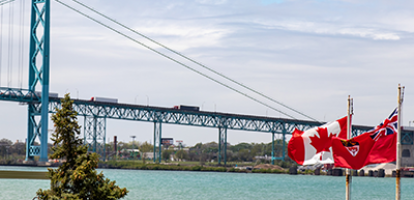From: Benjamin Dachis and Jennifer Y. Tsao
To: Ontario’s Standing Committee on Social Policy
Date: December 5, 2016
Re: Promoting Affordable Housing Act (Bill 7)
This week, the provincial government will consider the Promoting Affordable Housing Act to promote affordable housing. Municipal politicians might like the plan, but it will be costly for home buyers and is not the most effective way to give low-income families good housing.
The province’s plan is called inclusionary zoning. Inclusionary zoning is about changing the way social housing is built in our cities. Currently, the City of Toronto owns 62 per cent of government-subsidized housing. Inclusionary zoning would put more of the burden of building low-income housing on private developers instead.
Why do governments support such a change?
First, cities can offload the direct cost of building social housing onto developers. The result is lower property taxes for voters who would have financed social housing.
Second, low-income families might be better off living in middle-income neighbourhoods as opposed to traditional social-housing buildings. The hope is that by moving low-income families from low-income neighbourhoods (such as Moss Park in Toronto) to wealthier areas, children from low-income families will develop better health, educational and economic outcomes.
There is some evidence that such benefits exist, but it’s mixed. Canadian evidence shows that characteristics common among siblings explain earnings differences better than exposures to different neighbourhoods. Evidence from the United States found that moving into mixed-income neighbourhoods mostly benefited only young children while older children were actually slightly worse off after such a move. Young children who moved into affluent neighbourhoods saw significantly improved college attendance rates, went to better colleges and saw higher earnings later in life.
These are worthy goals, but every social program has a cost. Inclusionary zoning is like a tax on new housing to pay for subsidized housing. When governments tax something, prices go up, less of it gets made or both. Developers will pay the initial cost of building the low-income units, but the evidence from inclusionary zoning elsewhere is that home buyers will ultimately pay. In California where certain regions have implemented the policy, new house prices in cities with inclusionary zoning increased by 2 per cent to 3 per cent faster compared with cities without inclusionary zoning.
So, what could governments do instead to ensure housing affordability for low-income families?
One option is to put money directly into the hands of low-income families who need housing. These could be vouchers for housing costs for renters to use wherever they like. That would open the entire housing market to low-income residents. In contrast, the inclusionary zoning plan would apply only to new buildings, making the supply only a trickle.
With a voucher program paid by taxes, the costs to governments would be clear. Queen’s Park could easily assess the benefits of people finding housing relative to the costs of the subsidy. In contrast, the costs of inclusionary zoning will be difficult to measure.
If low-income housing is a priority, then everyone should pay for it through taxes. Inclusionary zoning puts the burden largely on new home buyers. Queen’s Park should look to other methods to improve housing affordability.
Benjamin Dachis is Associate Director of Research and Jennifer Y. Tsao is a Researcher at the C.D. Howe Institute
To send a comment or leave feedback, email us at blog@cdhowe.org.





